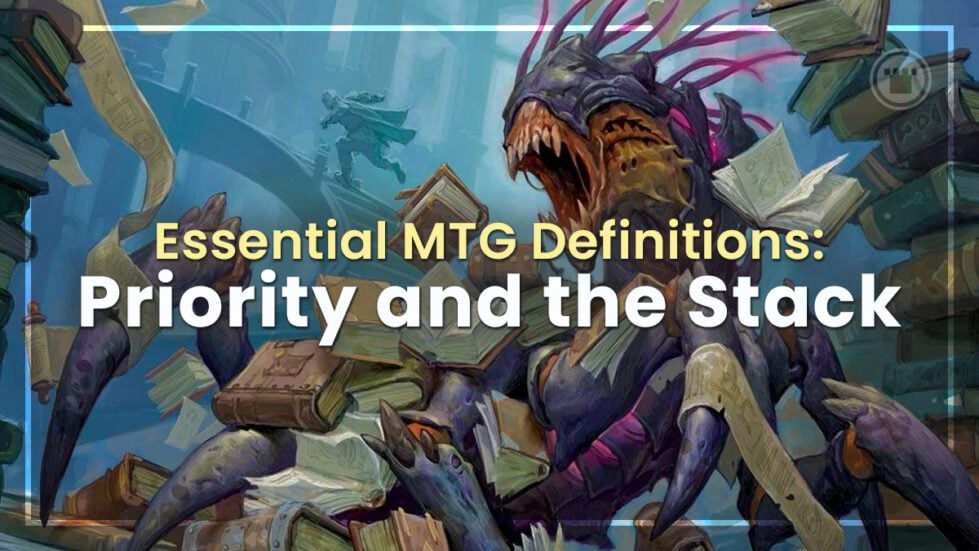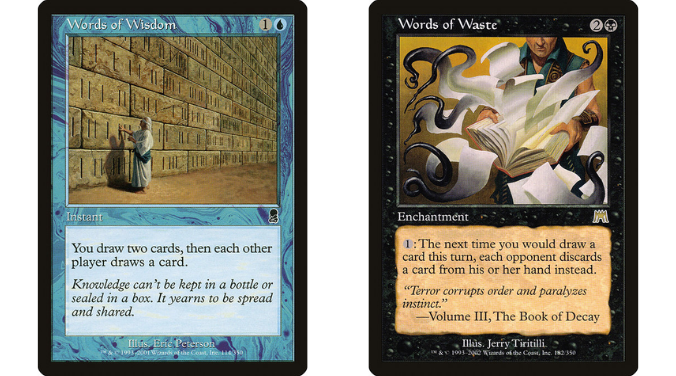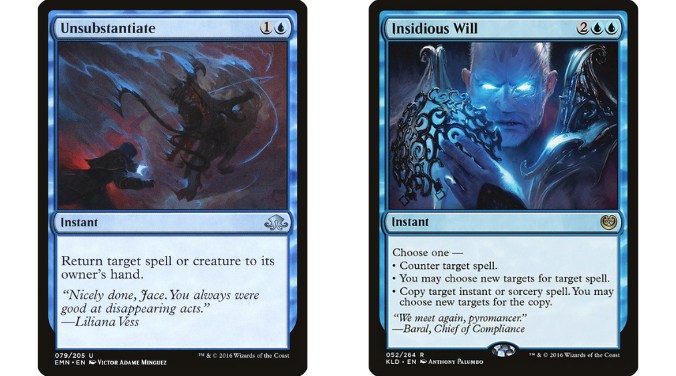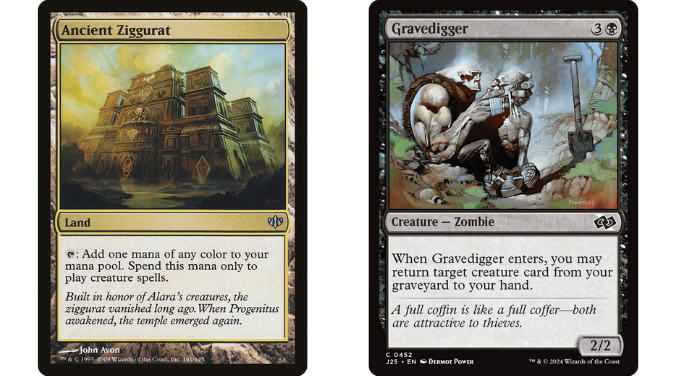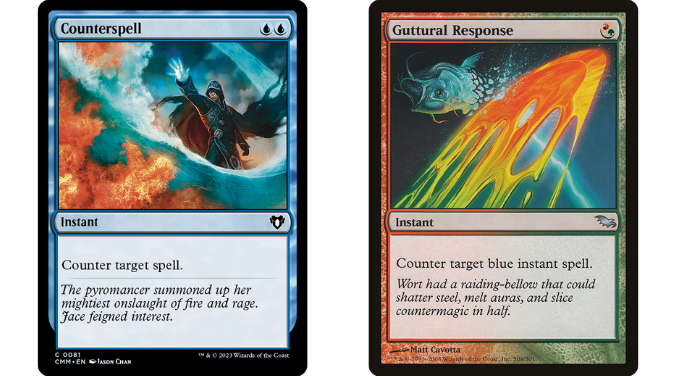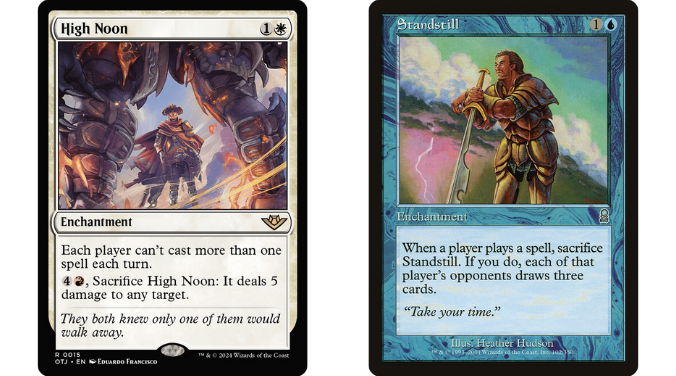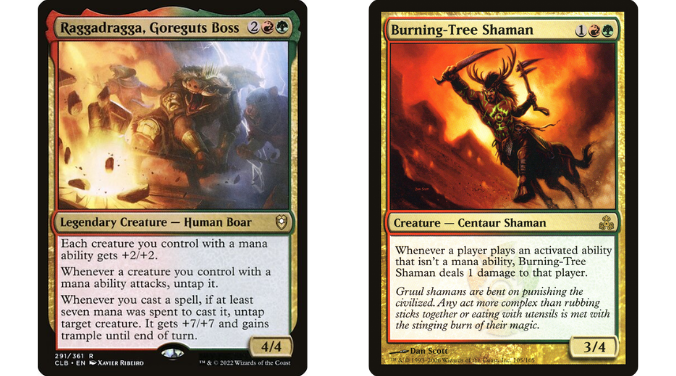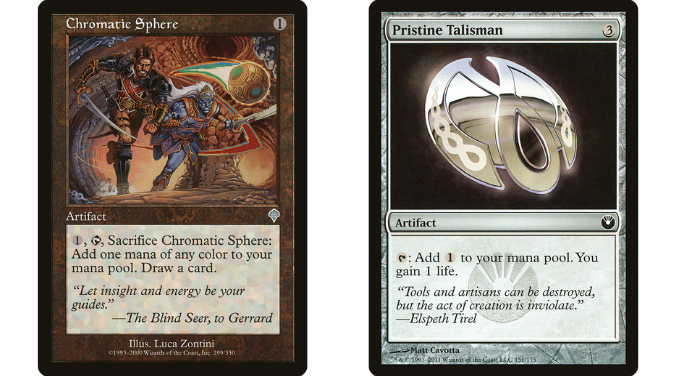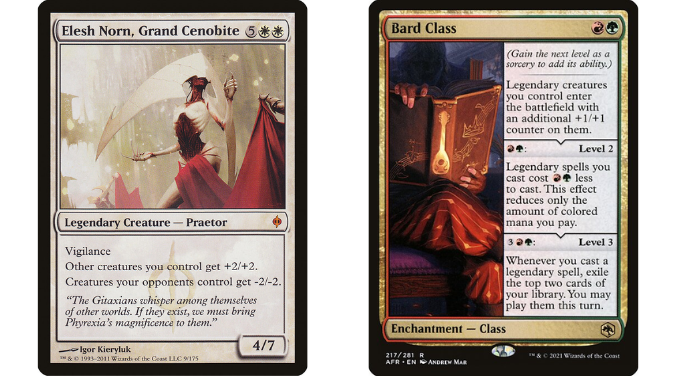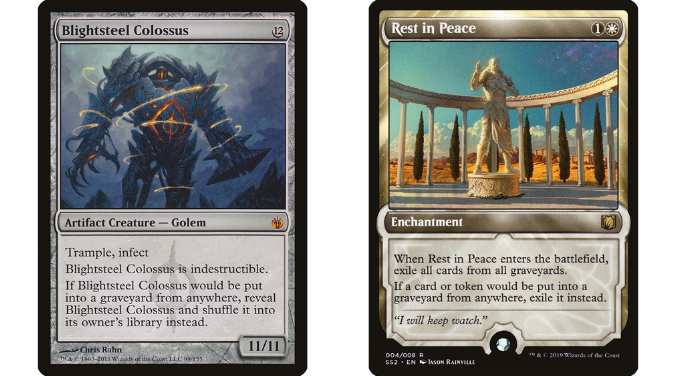Players who pick up Magic: The Gathering for the first time face an intimidating learning curve, that’s for sure. But the first and most important step is mastering the game’s unique language: an arcane vocabulary of keywords, rules terms and specific phrasing that holds the key to understanding every card from the last thirty years of Magic.
Some of the most essential and yet most often confused rules jargon concerns “the stack” – Magic’s somewhat infamous mechanic for deciding the precise order things happen.
Trying to comprehend what’s happening on the stack can feel frustrating and arbitrary to the uninitiated. But understanding and mastering these rules and the language around them is the key to unlocking the majority of advanced gameplay techniques. Follow along with our explanation here and you’ll be holding priority and responding to triggered abilities with the best of them!
Casting Spells and The Stack
We need to start here, because these words are absolutely core to the rules. They come up nearly every turn of every game. They also need to be defined together to make any sense.
“The stack” is one of the zones where cards and other objects can be placed during a game, like the hand, deck, graveyard or battlefield. But unlike those examples, nothing stays put on the stack very long – it’s more like a waiting room or pipeline where cards stop momentarily between hand and battlefield.
Unless you play on a digital platform like Arena, you will probably never see cards being moved into or out of this zone – its one of the parts of the game paper players (wisely) skip over unless something makes it specifically relevant – like a blue card that says “return target spell to its owners hand”. What can that card choose to target?
Simply put, any card currently in this zone (a.k.a. “on the stack”) is called a “spell” for rules purposes until it is moved somewhere else. It’s similar to how the word “permanent” refers to objects currently on the battlefield. In fact, if you draw a copy of Grizzly Bears to start your turn, it is considered a “creature card” while in your hand, a “creature spell” while briefly on the stack, and then a “creature permanent” once it’s on the battlefield (and it’ll go back to “creature card” once it moves to your graveyard or exile zone.
Yes, creatures are (briefly) spells too – in fact, the only cards which are never spells are Lands, since those are played straight from hand to battlefield without touching the stack.
This is what makes cards which say “target spell” powerful. They can be used to block almost any card, from creatures to sorceries to artifacts to planeswalkers, so long as you have them ready to catch those cards in the exact moment an opponent tries to play them. Because once a card leaves the stack again, it is no longer considered a spell, and those “target spell” effects have missed another chance. But how do cards come and go from the stack? What happens while they’re there?
A card moves to the stack as you “cast” it – which usually means announcing which card it is and tapping to pay any costs for it. As soon as anything goes on the stack, the rest of the game effectively pauses until you figure out what to do with it.
Every player in the game gets a chance to announce they’re using additional cards or abilities “in response” to the current stack. Cards used to respond must either be Instant or have the Flash keyword. Those cards and abilities will then be moved to the stack and placed on top of the cards already there.
Once everyone is finished adding to the stack, you can start actually applying the effects, starting with the top one (or the most recently replaced). This is how those “target spell” cards work – they go on the stack after/above the cards they target, so as you work your way down the stack they will apply their effects before that targeted spell does – and if their effect is to remove that target from the stack prematurely, then it will never get to resolve at all!
One final wrinkle: spells are not the only type of object you can find on the stack. Any card abilities which happen when a player pays a cost to use them (activated abilities) or automatically when specific conditions are met (triggered abilities) must also pass through the stack and can be responded to the same way (though you would need a card that says “target ability” to interact with one).
Resolves
Another stack-related term: this is the official term for a spell or ability “taking effect” once it reaches the top of the stack and nobody has any more actions to announce in response.
It’s a word which appears only rarely in the text of actual cards, but you’ll hear it a lot when playing paper Magic, as an acknowledgement of where the game state is at: “before that resolves, I’ll activate my ability”, or a simple “it resolves” when they have no response to a card being played.
Priority
Have you ever thought about what happens if two players want to play their spells at the same time? Or in a multiplayer game, if two players are wondering whether to counter the same spell – who has to make a decision first?
The concept of “priority” is how the Magic rules avoid these standoffs. Essentially, there is always exactly one player who currently has the right to take actions and make decisions in the game. That player has priority, and until they choose to pass priority to the next player, nobody else can do anything!
That may sound extreme, but since the rules ensure priority has to pass all the way around the table (in turn order, starting with the player whose turn it is) before each spell resolves and between each step and phase of a turn, everyone is still able to play effects at the moments they need to.
This is true even when a player elects to “hold priority” and take multiple actions in a row. Other players cannot interrupt that string of actions in real time, but they WILL get priority between each of the effects as they resolve. Ultimately, priority is much more about keeping the game flowing and easy to understand than a mechanic you can use to trick or outplay opponents.
Mana Ability
This is an interesting term because it usually appears on cards as an exception: cards that care about when something “isn’t a mana ability”. At some point, reading these effects invites the question: what counts as a mana ability?
The short answer is “an ability which can add mana to your mana pool, and which doesn’t have any targets”. Loyalty abilities of planeswalkers are also specifically excluded from counting as mana abilities.
The important thing about mana abilities is that they don’t use the stack, so they can’t be responded to even if they have additional effects (like gaining life or drawing cards) which feel like they should be going through the stack. You are allowed to activate mana abilities at almost any time, so long as you’re being asked to pay mana for something – even in the middle of resolving another spell or ability, or during your untap step, where you normally don’t get priority!
State-Based Action
Another component of the invisible rules engine which help avoid timing conflicts, state-based actions are how Magic enforces its fundamental “rules of nature” – rules such as “instants and sorceries can’t be on the battlefield”, “a player can’t control multiple copies of the same legendary card” and “creatures die when they take too much damage”.
The game checks through a list of these rules any time a player is about to get priority, and uses state-based actions to move cards around and otherwise ensure those rules are enforced correctly.
State-based actions are not controlled by any player, do not use the stack, and do not give players a round of priority to respond to them. This is because SBAs are simply applying the indirect consequences of other effects that you could have responded to earlier. If someone uses Lightning Bolt to deal lethal damage to your two toughness creature, you already have the chance to defend against that spell while it’s on the stack. Once the Bolt resolves, it’s too late to buff your creature with Giant Growth – it is immediately sent to the graveyard as a state-based action.
But it is still important to remember that state-based actions are not applied until you have finished resolving the full text of a spell, or during turn-based actions where players do not gain priority. This is why you won’t die if you target yourself with Lightning Helix, even if you’re on one life: eliminating players who are out of life is also an SBA, so as long as the Helix heals you back to a positive total before it finishes resolving and SBAs are next checked, you’ll be okay!
Replacement Effect
Most players (including you, if you’ve read our Beginner Magic Definitions article) are familiar with how triggered abilities work: they say “when X happens, do Y”. In this case, Y is an additional consequence that happens after X, even if the effect is to completely reverse or overwrite X.
But some cards are worded slightly differently: they say “when X would happen, do Y instead”, or “as X happens, do Y” or even “X enters tapped”. Though they feel like triggers, these are “replacement effects”, and they follow a similar but different set of rules to the more common wording.
The most important thing to remember is that while triggers create an ability on the stack which can be responded to separately from whatever triggered them, replacement effects alter how other effects resolve in real time.
This is why lands which enter tapped are written with a replacement effect instead of a triggered ability: if they came in untapped and then became tapped a moment later due to a trigger, there would still be a window where players could tap them from mana and negate this drawback.
It’s also why you can’t wait to see what card is being named by effects like Nevermore or Pithing Needle and then try and use the named card in response – the choice of name becomes part of them entering the battlefield and the restriction is already applied before anyone gets priority.
Because nobody gets priority, this means not even state-based actions can happen “before” replacement effects modify an action. If an opponent controls Elesh Norn, Grand Cenobite and you control Bard Class, your Ayula, Queen Among Bears and other two-toughness legendaries can safely enter the battlefield knowing they will have an extra +1/+1 counter added before Norn’s static debuff can snuff them out.
If multiple replacement effects are in play which apply to the same event, they must each be applied, one at a time. Aside from certain corner cases, the order of application is up to the player being affected by that action. Often this order isn’t important – having three City on Fire in play multiplies your damage by 900% regardless of how you stack them!
But sometimes it does matter: if Rest in Peace is in play and you sacrifice a Blightsteel Colossus, choosing to apply the creature’s own “shuffle back in” replacement effect first can save it from being exiled. Just think through the series of effects as you order them – do any of them change the event in a way which “breaks” the others, and do you want that to happen?
GET YOUR PRIORITIES STRAIGHT
As I implied at the start, there’s probably no aspect of the rules which is as beneficial to understand yet so widely misunderstood as this one. This is still true even if you never intend to play Magic as a competitive tournament game.
The multiplayer and combo-happy nature of Commander makes it basically a prerequisite to know your way around the stack and how the timing of different abilities interacts – if you don’t believe me, you’ve never seen a Massacre Girl pilot cast their commander into a crowded boardstate!
Of course, I assume that most experienced players who glance over these definitions are going to find things they mostly already know. But there’s very few of us who can claim a truly complete understanding of Magic, and if reading an article like this helps fill in even one little blindspot you didn’t know you had, then I’m glad you stuck with it. See you all next time for some more notoriously thorny terminology!
Are you new to Magic and want more content teaching you about the game? Sign-up for our emails and we’ll make sure you’re in the know about new content!

Tom’s fate was sealed in 7th grade when his friend lent him a pile of commons to play Magic. He quickly picked up Boros and Orzhov decks in Ravnica block and has remained a staunch white magician ever since. A fan of all Constructed formats, he enjoys studying the history of the tournament meta. He specializes in midrange decks, especially Death & Taxes and Martyr Proc. One day, he swears he will win an MCQ with Evershrike. Ask him how at @AWanderingBard, or watch him stream Magic at twitch.tv/TheWanderingBard.

